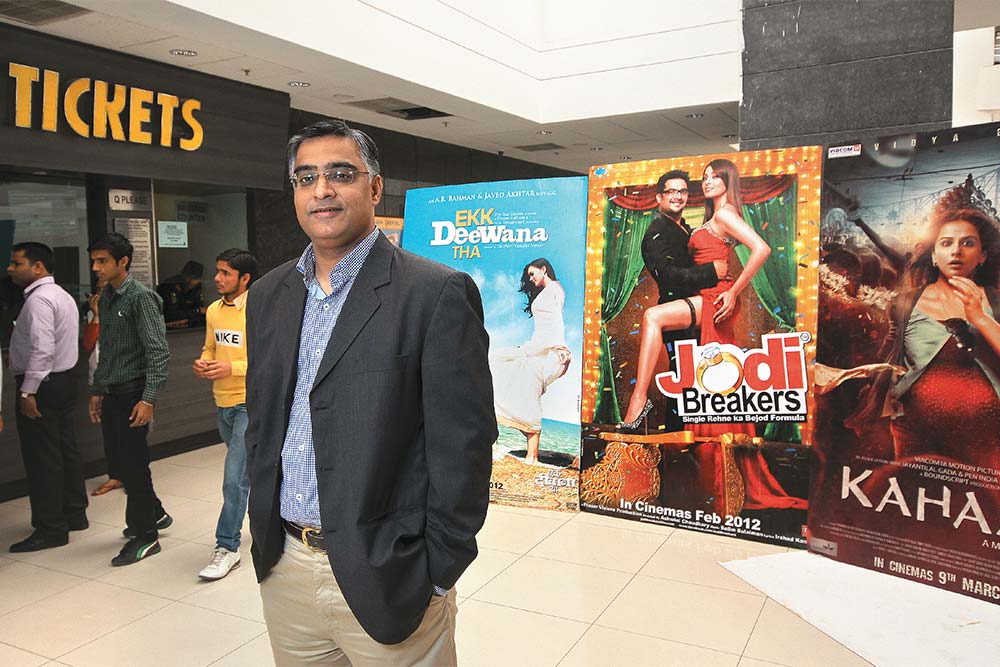About 165 km from Delhi on NH1, a massive stone arch with Lord Krishna and Arjuna perched on top in a chariot greets visitors to the epic town of Kurukshetra. Pizza outlets, restaurants and brightly-lit showrooms of leading fashion brands draw young crowds. And the town’s only mall with its three-screen multiplex stands tucked between two commercial markets. Sumant Bhargava, MD, Stargaze Entertainment, which runs the multiplex as Glitz Cinema, walks to the ticket-counter and has a discussion with representative of a local movie distributor — they replace a just-released Bollywood romance, which is not finding many takers, with the Hindi-dubbed version of the Nicholas Cage-starrer Ghost Rider.
The movie-watching preferences of tier 2 and tier 3 audiences are different from their metropolitan counterparts. “Bollywood stars draw the crowds, as do the Hindi-dubbed versions of big-ticket Hollywood action flicks,” say Bhargava. Regional movies do well in some pockets and keep the crowds flowing. There are not many takers for niche movies, and audiences would rather have their heroes play it large and loud. “Desi Boyz [a recent Bollywood release with Akshay Kumar and John Abraham in the lead] did better business in smaller towns than in most metros,” says Bhargava.
Bhargava, an IIM graduate who has been in the cinema exhibition business for over 15 years, promoted and bootstrapped Stargaze Entertainment four years ago with investments from the Network18 group — so far, over ₹41 crore has been invested in the business. Glitz cinema halls are present in eight tier 2 and tier 3 cities and towns across northern India, including Ajmer, Raipur, Ranchi, Dehradun, Jodhpur, Bilaspur and Yamuna Nagar, sharing between them 22 screens. Bhargava’s hunch was that audiences that were used to watching movies on a single screen would not mind paying more for the ambience and quality viewing experience of a multiplex. “The whole idea was to give them the feel of a multiplex,” he says.
Kurukshetra’s catchment area is a floating population of about 400,000 — students, farmers, traders, tourists — who flock to the town every day, and it’s numerically as large in its size as the population of local residents. Movie-going habits are typical of small towns: low turnout on Sundays and for late-night shows, and mostly families over the weekend. “On Fridays, almost all shows run to full houses, thanks to the large student population in the area,” says a floor manager.
The average ticket price is around ₹140. Over this, a typical middle India moviegoer spends around ₹38 on food and beverage (F&B), which is priced 15-20% cheaper than in metros. In major metro markets, the average ticket price ranges from ₹175-180 and the moviegoer splurges another ₹40-50 on F&B. As the average F&B spend between metro and non-metro cities is similar, the small town moviegoer actually spends more on F&B than his brethren in big cities.
Manpower costs in metros and non-metros are more or less similar, while rental costs can be about 20-50% cheaper in smaller towns. As smaller towns have only one or two malls, competition, too, is limited in these markets. Thus, in Kurukshetra, Glitz was cash flow positive within the first three months of opening in 2009. It takes around #3-4 crore to set up a three-screen multiplex in a small town, and between three and five years to break even. In metros, this figure is around five-seven years. Stargaze became EBITDA positive in FY11 and closed FY12 with a net profit of ₹1 crore on a topline of ₹36 crore.
When Bhargava started out in 2008, his initial plan was to have 50 screens in three years. But as luck would have it, the global slowdown struck. “We lost a full year,” he says. Many mall projects got stalled midway, putting his plans on hold. However, it also proved to be an entry barrier for new players to enter the segment. Bhargava believes his business is scalable provided a sufficient number of malls come up in tier 2 and 3 towns and cities. His next goal is to take the screen count to 35 over the next one year. Unwilling to spread his resources too thin, he plans to first tap opportunities in the north before heading southwards. Lord Krishna would approve of such a focused approach, be it in business or war.











